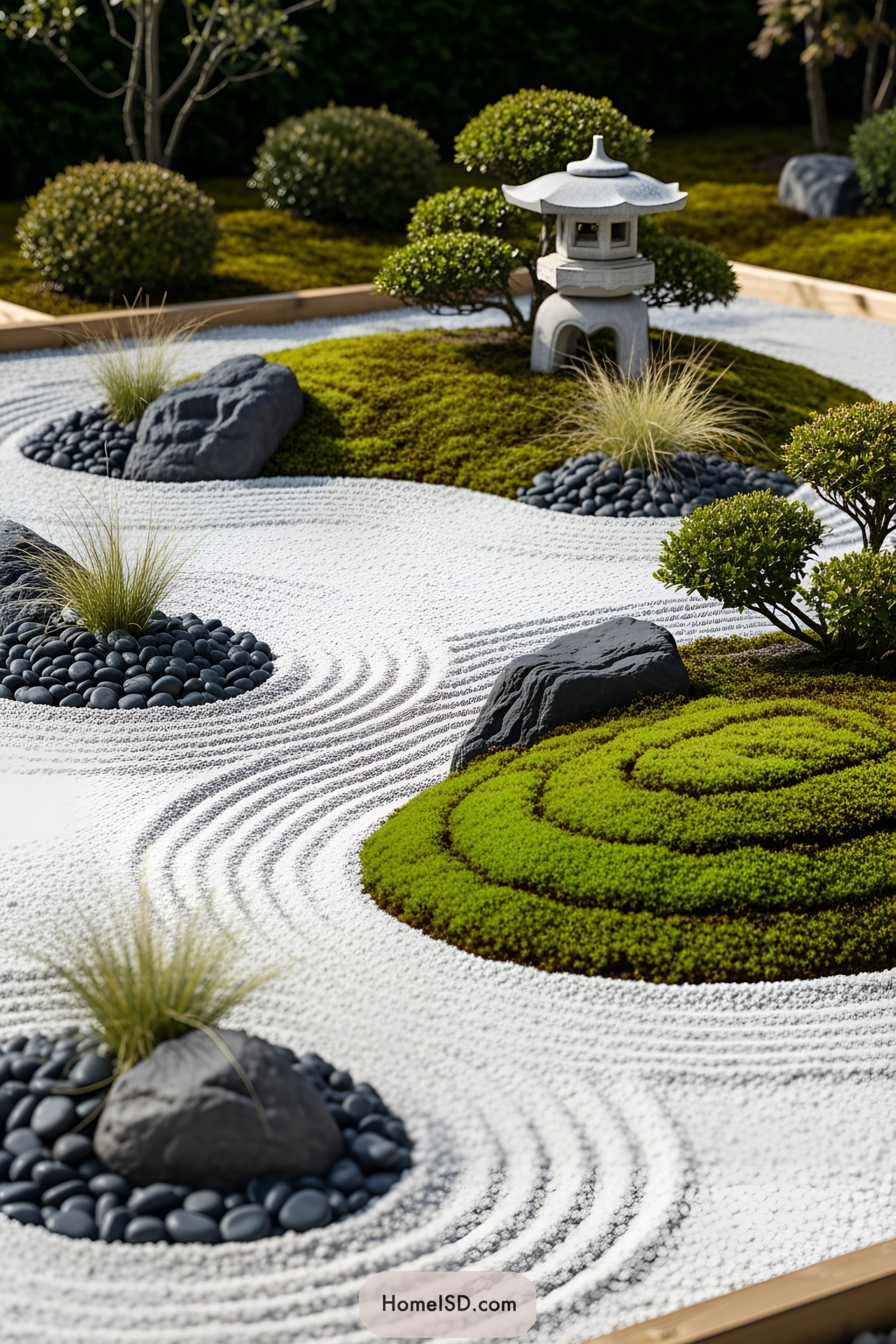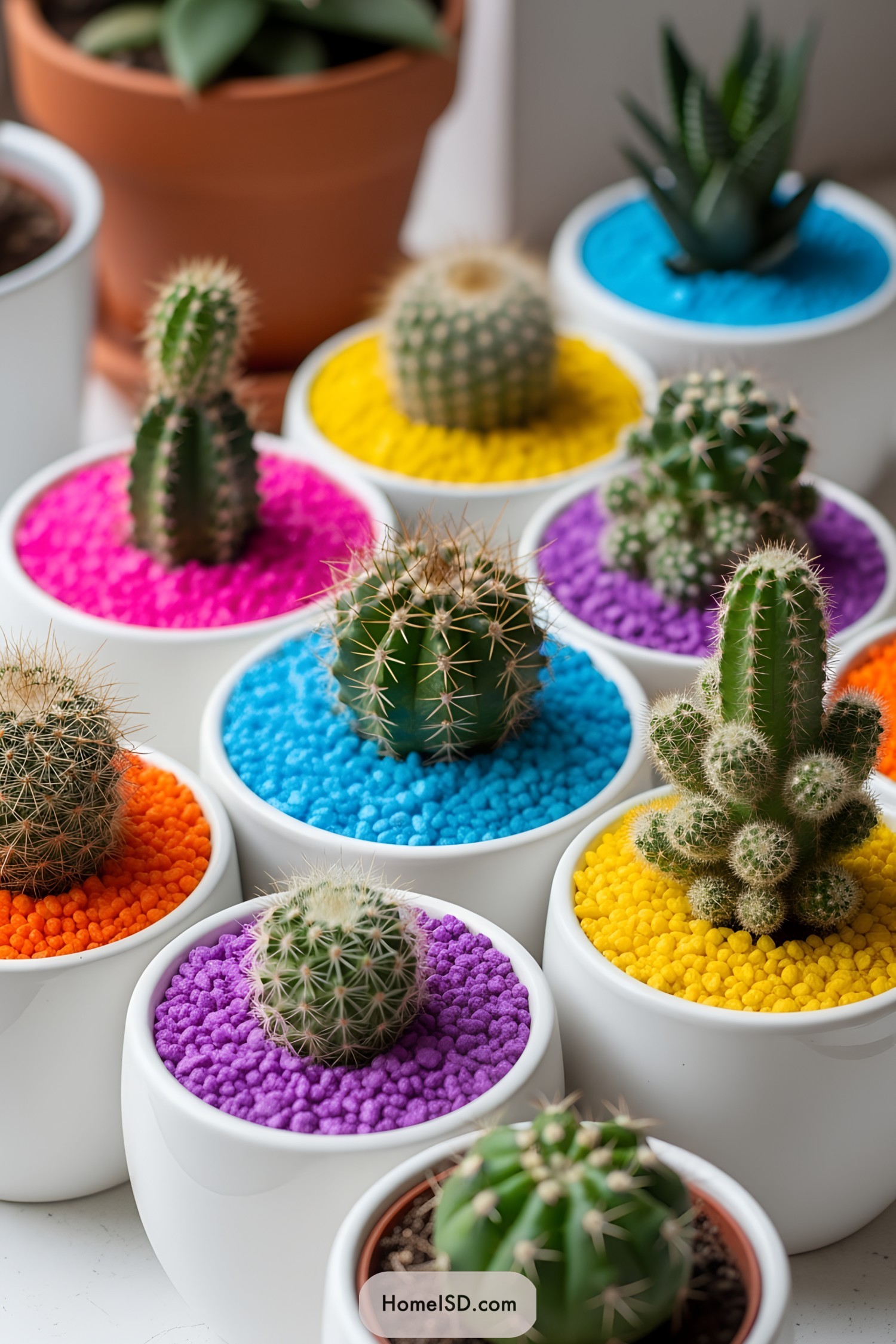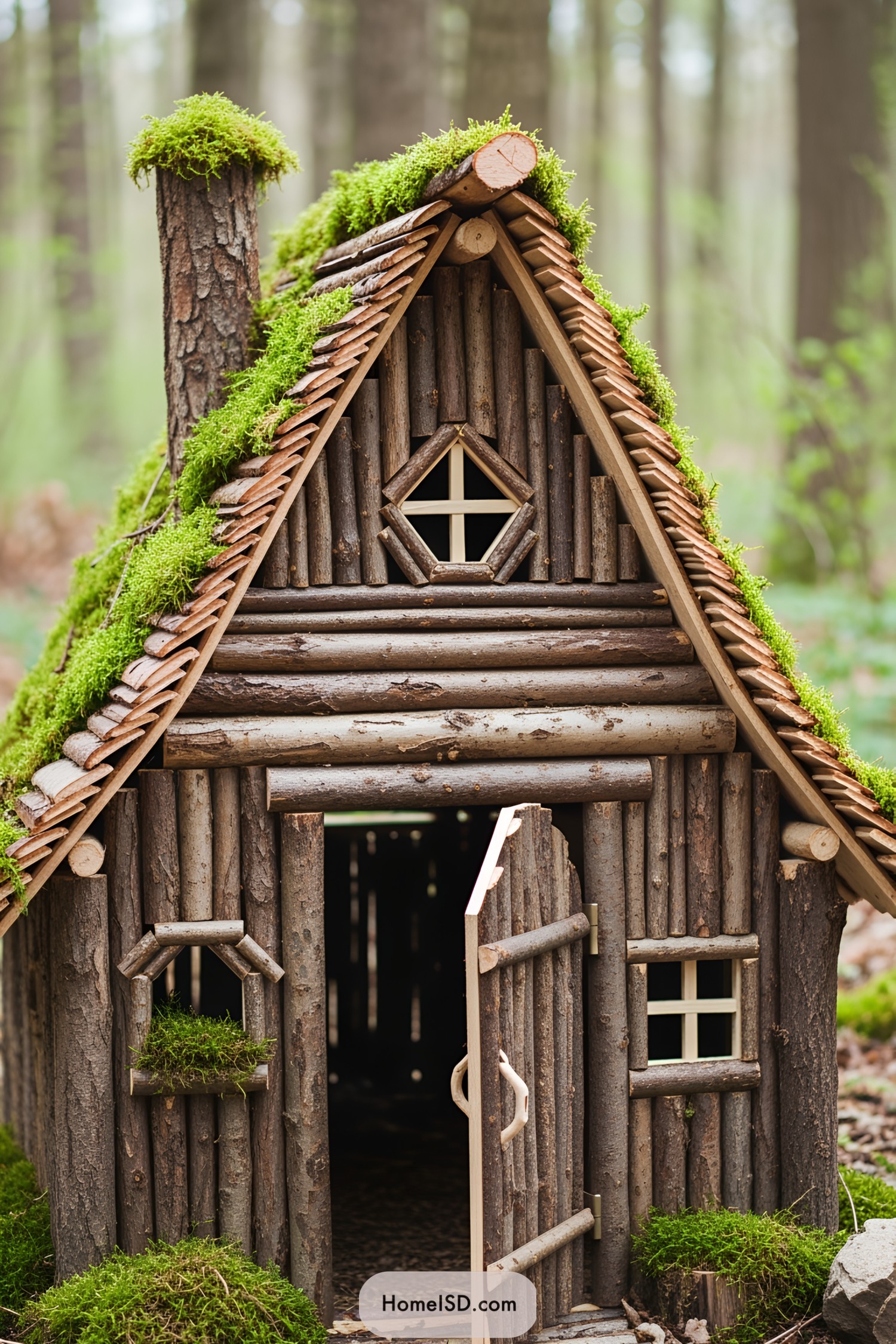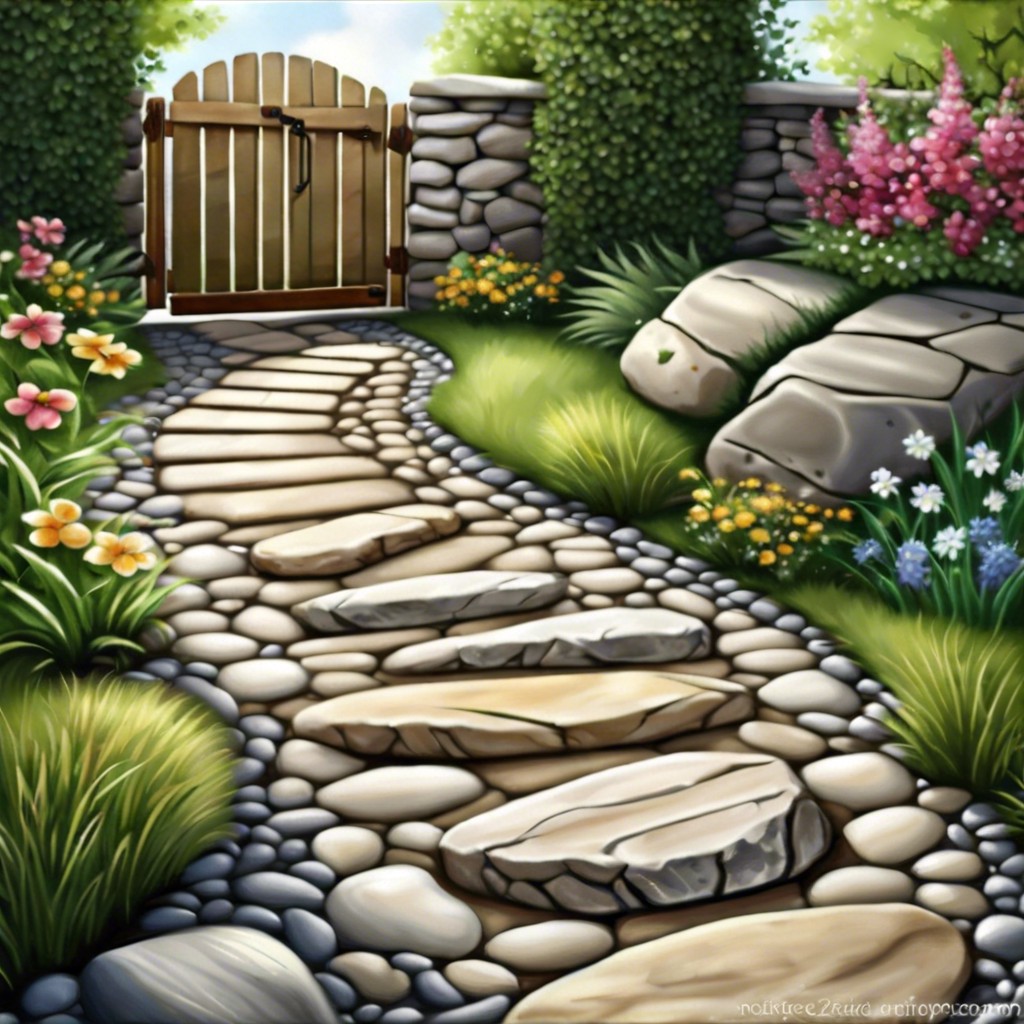Last updated on
Choosing the cheapest siding for your shed is crucial because it not only significantly influences the aesthetics but also guarantees durability, driving you to understand your options better.
When constructing or renovating your shed, choosing the right siding is pivotal—it’s not merely about keeping costs low, but also ensuring a smart investment that can withstand the test of time and the elements.
Quality siding transcends mere aesthetics; it acts as a shield against moisture, insects, and everyday grime while potentially enhancing your property’s energy efficiency and value.
In the pursuit of affordable options, it’s key to weigh durability, maintenance demands, and the benefits of insulated materials.
Whether your priorities lie with enduring harsh climates or boosting your shed’s resale appeal, this guide delves into the most cost-effective siding solutions that don’t compromise on protection and performance.
Let’s explore how you can secure the best bang for your buck—providing complete details to fortify your shed effectively and economically.
Key takeaways:
- Durability: Choose siding that can withstand various weather conditions.
- Protection: Quality siding keeps moisture, insects, and dirt out.
- Maintenance: Consider the level of upkeep required for different materials.
- Energy Efficiency: Some siding materials provide insulation for better temperature control.
- Resale Value: Durable and visually appealing siding can increase property value.
Importance of Choosing the Right Siding for Your Shed
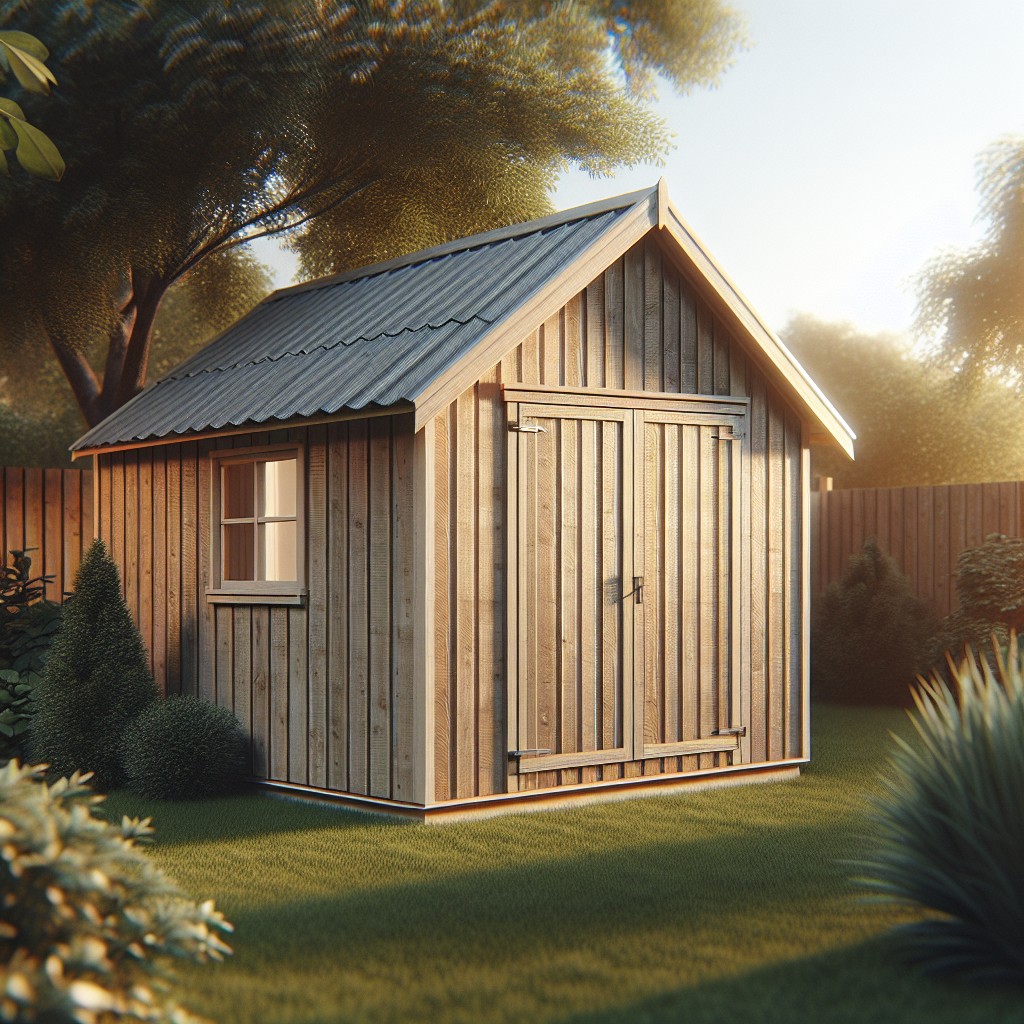
Selecting the right siding for your shed is more than just a matter of aesthetics. This decision impacts not only the building’s resistance to weather and pests but also the amount of upkeep it will require over the years. In addition, your choice can influence the overall value of your property. Here’s why this decision matters:
- Durability: The right siding can withstand various climate conditions, from blistering heat to freezing winters, without warping or rotting.
- Protection: Quality siding acts as a shield, keeping moisture, insects, and dirt at bay, safeguarding your shed’s structural integrity.
- Maintenance: Some materials are virtually maintenance-free, while others might need regular painting or treatment.
- Energy Efficiency: Well-chosen siding materials can provide insulation, keeping your shed cooler in summer and warmer in winter, which is especially important if the space is being utilized as a workshop or office.
- Resale Value: A shed with durable and visually appealing siding can boost your property’s overall appeal and market value.
Making an informed choice will pay off in the long term, granting you peace of mind and potentially saving money on repairs and energy costs.
Factors Affecting Siding Costs
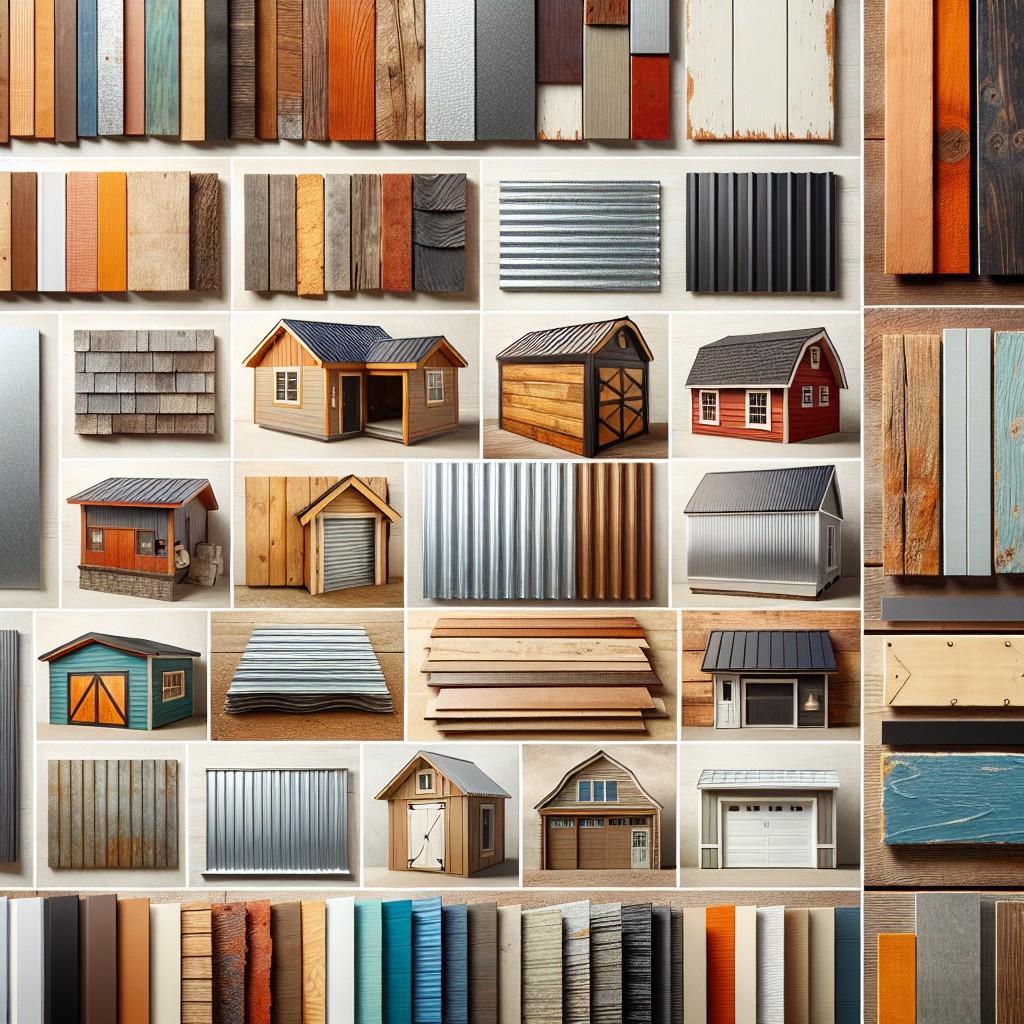
Material is one of the primary determinants of siding cost. High-end options like fiber cement or natural wood typically come with a steeper price tag compared to vinyl or metal. The overall size and design complexity of your shed also factor into the cost, as larger sheds or those with more intricate features require more materials and labor.
Maintenance needs influence long-term expenses; cheaper materials may demand more upkeep over the years. Climate plays a role as well, with some materials being better suited (and thus more cost-effective) for certain weather conditions. Additionally, the cost of labor for installation can vary widely depending on whether you opt for a professional service or a DIY approach.
Remember, although some materials may have a lower initial cost, considering their durability and maintenance requirements is essential for evaluating true long-term value.
Pros and Cons of Cheap Siding Materials
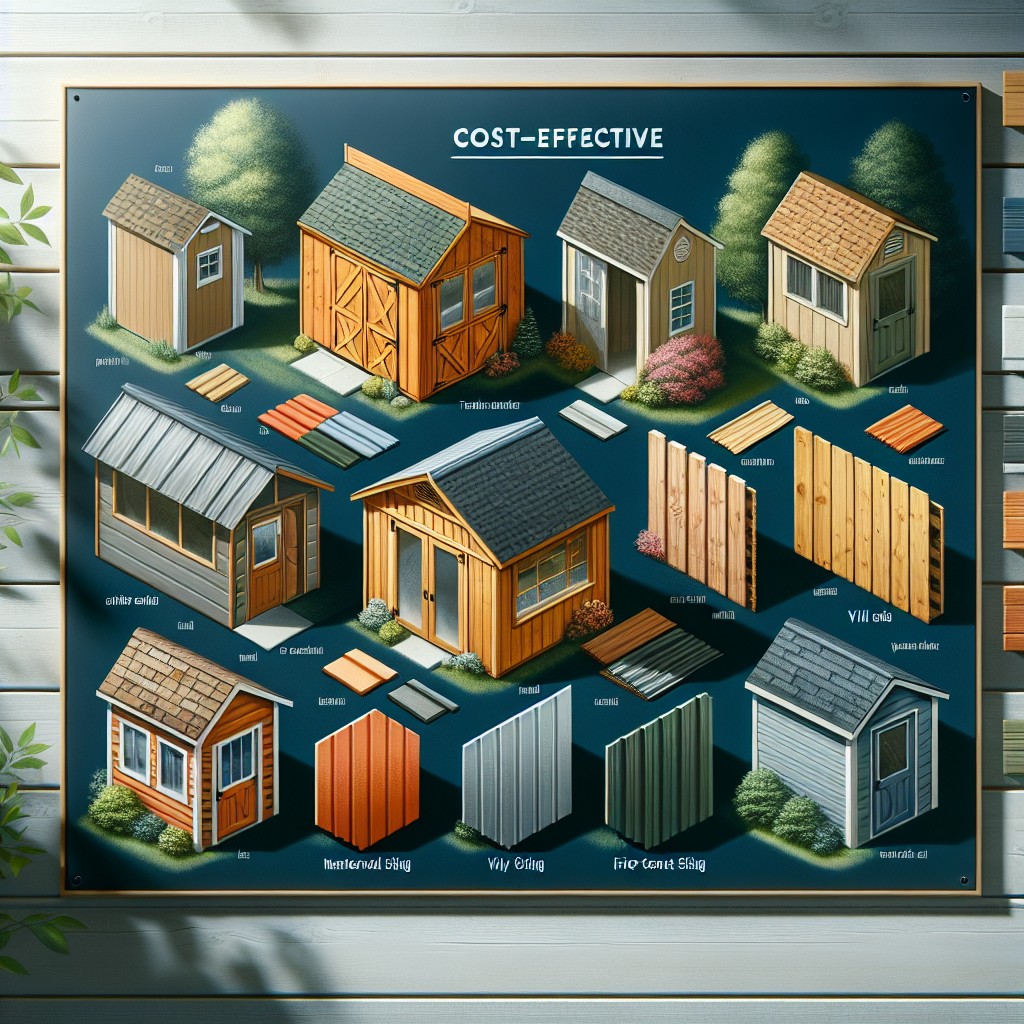
Selecting economical siding means balancing cost with a host of other factors like durability, maintenance, and aesthetics. Here’s what to consider:
Pros:
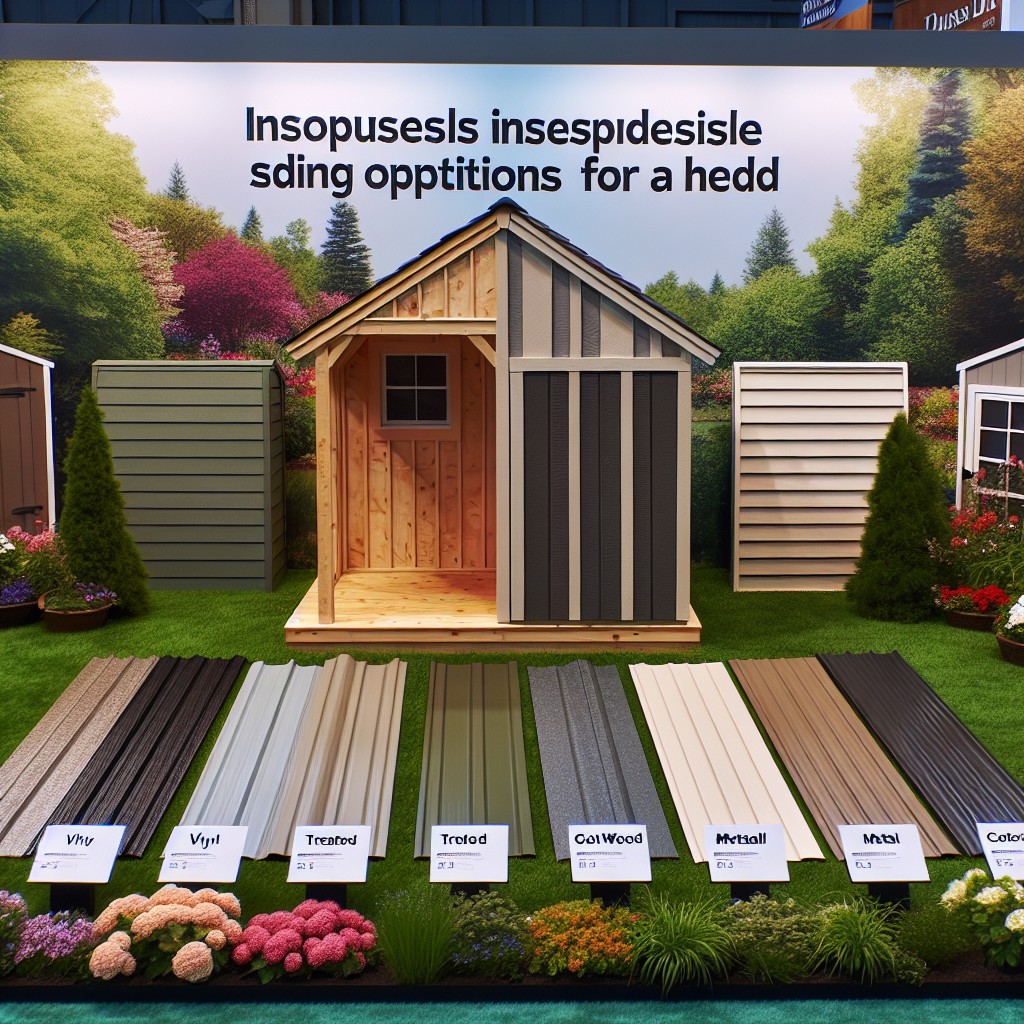
- Affordability: Your upfront cost is significantly lower, keeping the overall project budget-friendly.
- Ease of Installation: Cheaper materials often cater to DIY enthusiasts, potentially saving on labor costs.
- Variety: There’s often a wide range of styles and colors, even in less expensive options.
Cons:

- Durability: They may not withstand harsh weather conditions as well as premium materials, leading to potential damage.
- Maintenance: Expect more upkeep to prevent deterioration, which could include painting or sealing more frequently.
- Aesthetic Appeal: While there’s variety, the look and feel might not match that of higher-end materials, potentially affecting your shed’s overall appearance.
- Environmental Impact: Inexpensive options may not be the most sustainable, necessitating a weigh-in of long-term environmental concerns.
In essence, while the initial savings are clear, they may be offset by future time, effort, and costs related to maintenance and potential replacement.
Vinyl Shed Siding
Vinyl siding is a standout among budget-conscious homeowners due to its blend of affordability, durability, and low maintenance needs. Lightweight and available in a vast array of colors and textures, it mimics more expensive materials without breaking the bank.
Installation is straightforward, often making it a favorable choice for DIY enthusiasts aiming to cut costs further.
A key advantage lies in its resistance to rot, insects, and weather extremities, generally outperforming other inexpensive options like traditional plywood.
While upfront costs may be marginally higher than the cheapest alternatives, vinyl typically offers savings over time thanks to its minimal upkeep requirements. No need for painting—just an occasional hose down keeps it looking fresh.
Bear in mind, though, that while it withstands many environmental challenges, it can crack under severe impact and may fade after prolonged exposure to the sun.
When considering vinyl, factor in both the initial expense and the potential long-term benefits to truly gauge its cost-effectiveness for your shed project.
T1-11 Shed Siding
T1-11 siding is a popular, budget-friendly choice that offers a classic wood-grain look for sheds without breaking the bank. This material is a type of plywood that is durable and easy to install, which can be advantageous for DIY enthusiasts looking to save on labor costs.
Here’s what you should know when considering T1-11 for your shed:
- Durability: It holds up well over time, but it requires proper sealing and regular maintenance to prevent water damage and decay.
- Installation: It comes in large panels, which makes for a relatively quick installation process.
- Aesthetics: With its natural wood texture, it adds a traditional rustic charm to any shed.
- Versatility: It can be stained or painted in a variety of colors, allowing for customization to match your home or landscape.
- Maintenance: Expect to reseal and repaint or restain every few years to maintain its appearance and structural integrity.
- Cost-effectiveness: Typically less expensive than many other siding options, T1-11 provides excellent value.
Keep in mind that while T1-11 is initially cost-efficient, the ongoing maintenance may add to the overall expense over the lifespan of your shed. Regular upkeep is paramount to prevent future issues and ensure longevity.
Engineered Wood Shed Siding
Engineered wood, often known as composite wood siding, presents a marriage of aesthetics and economy. Typically fashioned from wood fibers combined with binders and resins, this material mimics the appearance of natural wood while offering enhanced resistance to rot and pests compared to traditional wood siding. It comes pre-primed and is readily paintable, which means you can customize the look to suit your taste or match your home’s exterior.
Installation is relatively straightforward, making it a feasible option for the hands-on homeowner interested in tackling a weekend project. It’s sold in large sheets which cover more area faster, thereby reducing labor time and costs, if opting for professional help.
Though more expensive upfront than options like T1-11, engineered wood’s durability can make it a cost-effective choice over time. Maintenance involves occasional washing and repainting every few years to keep it looking fresh. This makes it a balanced option for those wanting curb appeal without the hefty price tag of solid wood.
Metal Shed Siding: Aluminum and Steel
When exploring metal options, aluminum offers a lightweight and rust-resistant advantage, ideal for coastal areas where saltwater might corrode other materials. It’s relatively maintenance-free and comes in a variety of colors. On the downside, it can dent more easily than its steel counterpart.
Steel siding, known for its strength, can withstand harsh weather and is less prone to denting. It typically comes with a protective coating that fends off rust, making it a long-lasting choice. However, it can be prone to corrosion if the coating is compromised, so periodic checks are recommended. Both options often come in panels that can be easily installed with standard tools, making for a streamlined assembly process.
Traditional Plywood Siding
Affordability is one of the key advantages of traditional plywood siding, making it extremely appealing for shed projects on a budget. This material offers a basic level of protection against the elements and is relatively straightforward to install, which can further reduce costs if you’re handling the installation yourself.
Despite its cost-effectiveness, it’s important to note that plywood can be susceptible to moisture and may require more maintenance over time compared to other materials. To extend its lifespan, sealing or painting the plywood is a must. This will add a layer of moisture resistance and help to fend off potential rot or warping.
Additionally, plywood affords you the opportunity to customize your shed’s appearance. It serves as a smooth canvas for any paint color or finish, allowing for a personalized touch that can blend seamlessly with your outdoor space.
When considering insulation, plywood does not naturally provide the same level of thermal retention as some insulated options. However, it can be paired with external insulation to improve its thermal properties, which may be a consideration depending on your climate and the intended use of the shed.
Choosing plywood for your shed siding can be a smart move economically, but remember to weigh this choice against future maintenance needs to ensure it remains a cost-effective solution in the long run.
Comparing Costs of Siding Options
When weighing your options for shed siding, price tags vary significantly. Vinyl, renowned for low maintenance, is priced around $3 to $7 per square foot. It’s a mid-range option that marries affordability with longevity.
T1-11 siding offers a wood finish at a lower cost, between $1.50 and $3.50 per square foot, but keep in mind it may require more upkeep. Engineered wood is a cost-efficient alternative, typically costing $2 to $5 per square foot, blending durability with aesthetic appeal.
For those on a tight budget, consider metal sidings, such as aluminum or steel, which can range from $3 to $7 per square foot. They provide robustness against the elements, though they may dent and are prone to rust in certain climates. Traditional plywood remains the stalwart for the budget-conscious, available for as little as $1 to $3 per square foot. While it entails more frequent maintenance, it’s hard to beat for an upfront cost-saving option.
Remember, the key is to balance the initial expenditure with the anticipated lifespan and maintenance demands of the siding material. Opting for the cheapest upfront cost might not always translate to savings over time, so consider your willingness to engage in regular maintenance or the potential need for an earlier replacement.
Shed Siding Options By Durability and Maintenance
Durability and maintenance are critical when picking siding for your shed. Vinyl is a champion in longevity, resisting rot, pests, and rust, and it doesn’t require painting.
On the flipside, T1-11 siding gives a traditional wood appearance but will need regular upkeep and a protective coating every few years to fend off deterioration.
Engineered wood offers improved resistance to the elements over traditional plywood but also demands periodic painting or staining.
Metal options, like aluminum and steel, stand strong against corrosion with a protective finish but can be vulnerable to dents.
Plywood is the most affordable but is susceptible to water damage.
To ensure these siding materials last, keep them clean, promptly repair any damage, and refinish as needed.
Installation Considerations: DIY Vs. Professional
Embarking on installation yourself can substantially cut costs. If you have basic carpentry skills, tools, and the time to invest, installing shed siding can be a manageable weekend project. Most budget-friendly siding options come with user-friendly installation guides. Retailers usually provide informational booklets or online tutorials specifically for DIY enthusiasts.
However, it’s essential to consider the complexity of the siding material you choose. For instance, vinyl siding, while inexpensive, requires careful handling to allow for expansion and contraction with temperature changes. Skimping on precision with this material could lead to warping or buckling.
On the other hand, professional installation guarantees expertise, efficiency, and often a warranty on workmanship. If you’re not confident in your DIY skills, or if the siding material requires specialized installation techniques, investing in professional services could save on potential repair or replacement costs. Moreover, pros often have access to higher-grade materials at a lower cost through industry contacts.
Remember to factor in the cost of tools if you don’t already possess them. These can sometimes offset the savings you aim to achieve through DIY. Research your chosen siding material thoroughly, weigh the investment of your time against the cost of hiring help, and proceed according to what best aligns with your budget, skill level, and project timeline.
How to Save On Shed Siding Without Compromising Quality
Maximizing value without sacrificing the integrity of your shed’s exterior is both smart and practical. Consider the following tips to stretch your dollar further:
- Purchase siding materials during off-season sales or clearance events. Suppliers often discount last season’s stock.
- Look into buying in bulk. Larger quantities might fetch a lower per-unit cost, especially if you’re siding multiple sheds or have future projects planned.
- Explore local classified ads and online marketplaces for second-hand or leftover siding. Often, builders and DIYers will sell excess materials at a significant discount.
- Opt for factory seconds with minor imperfections that won’t affect performance but come at a reduced price tag.
- If you feel confident in your DIY skills, self-installation can save the expense of professional labor. Just ensure you’re well-prepared with the right tools and knowledge before tackling the project.
- Regularly maintain your shed siding. Cleaning, sealing, or painting, if necessary, can prevent damage and prolong the life of the material, preventing costly replacements.
Choosing cost-effective solutions doesn’t mean you have to cut corners. With some strategic shopping and a willingness to put in a bit of elbow grease, you can achieve a balance between economy and excellence.
Long-Term Care for Shed Siding
Proper maintenance extends the lifespan of your shed siding, ensuring it remains both functional and visually appealing for years. Follow these straightforward tips to protect your investment:
1. Regular Cleaning: Remove dirt and debris with a gentle brush and mild detergent at least once a year. This prevents grime build-up that can wear down siding materials over time.
2. Prompt Repairs: Tackle any damage, such as cracks or holes, as soon as possible. This keeps the structure weather-resistant and prevents further deterioration.
3. Paint and Sealant: Reapply paint or sealant every few years to shield against moisture and sun damage, especially crucial for wood-based sidings like T1-11 and traditional plywood.
4. Pest Control: Be vigilant about pests. Insects and rodents can wreak havoc on certain materials. Use appropriate repellents and regularly inspect for signs of infestation.
5. Vegetation Management: Trim nearby bushes and trees. Overgrown foliage can scratch siding surfaces and retain unwanted moisture against the shed.
By adhering to these simple care practices, you’ll not only maintain the aesthetic of your shed but also reinforce its resilience against the elements.
Where to Find Affordable Shed Siding Materials
Scouring for budget-friendly siding materials may seem daunting at first, but with a strategic approach, you can land amazing deals. Home improvement stores often offer discounts, especially during end-of-season sales, making them a great pit stop.
Lumber yards and local sawmills also present a goldmine for economical options, particularly if you’re after wood siding; they may sell offcuts at a fraction of the price. Don’t overlook online marketplaces, as homeowners frequently post leftover materials from their own projects, ready to be snapped up for less.
For those who are environmentally conscious, reclaimed wood dealers provide sustainable siding solutions that often come with an attractive price tag. Buying in bulk can also lead to savings; coordinate with neighbors or community members who have similar projects in mind to share the cost.
Remember to inspect the quality of discounted materials closely, as the cheapest option isn’t always the most cost-effective in the long run.
FAQ
What is the least expensive siding for a shed?
The least expensive siding for a shed is vinyl due to its functionality across various climates, wide range of styles and colors, and availability in cost-saving pre-cut sections.
What is the cheapest thing to use for siding?
The cheapest option for siding is vinyl due to its low material and installation costs.
What is the cheapest barn siding option?
The most affordable barn siding options are plywood and vinyl types.
What are the cost-effective alternatives to traditional shed siding materials?
Vinyl, fiber cement, and reclaimed materials offer cost-effective alternatives to traditional shed siding materials due to their durability and low maintenance requirements.
How does the price of vinyl siding for sheds compare with wood or metal options?
Vinyl siding generally costs less than wood but is slightly more expensive than metal options for sheds.
Where can one find the best deals on budget-friendly shed siding materials?
The best deals on budget-friendly shed siding materials can often be found at local home improvement stores, online marketplaces like Amazon, and construction surplus outlets.
Recap

